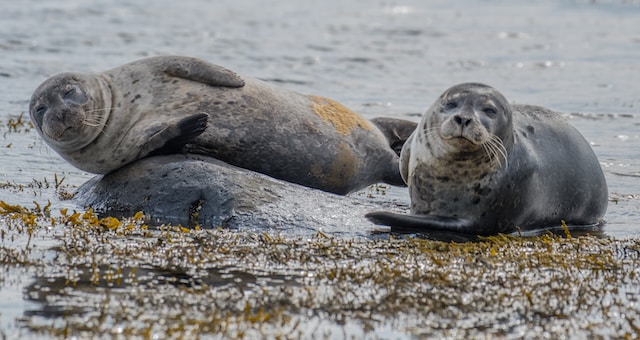Breaking News: New research has shed light on the extraordinary survival strategies employed by saber-toothed creatures during the catastrophic event known as the “Great Dying.” This groundbreaking study unveils a fascinating chapter in the history of Earth’s prehistoric predators and highlights their remarkable abilities to adapt and migrate in the face of adversity.
The “Great Dying,” also referred to as the Permian-Triassic extinction event, is considered the most severe mass extinction in the planet’s history. Occurring approximately 252 million years ago, it resulted in the loss of nearly 96% of marine species and 70% of terrestrial vertebrates. Among the survivors were the formidable saber-toothed creatures that roamed the Earth during this tumultuous era.
In a collaborative effort between paleontologists, biologists, and geologists, scientists embarked on a quest to understand how saber-toothed creatures managed to weather the catastrophic environmental changes brought about by the “Great Dying.” By examining fossil records, isotopic analysis, and sedimentary layers, they pieced together an intriguing narrative of survival and migration.
The findings, published in the prestigious journal Scientific Advances, reveal a fascinating picture of resilience and adaptation. It was discovered that saber-toothed creatures, such as Smilodon and Homotherium, undertook extensive migration journeys during this tumultuous time, seeking out suitable habitats and resources.
The researchers hypothesize that these prehistoric predators embarked on long-distance migrations in search of areas that provided them with ample prey, water sources, and favorable climatic conditions. The ability to traverse great distances ensured their survival amidst the drastic changes in their environment.
During the “Great Dying,” the Earth witnessed significant shifts in climate, including rising temperatures, acidification of oceans, and the release of toxic gases. As vast regions became inhospitable, saber-toothed creatures embarked on epic journeys, adapting to new landscapes and encountering unfamiliar challenges along the way.
Isotopic analysis of fossilized teeth provided crucial insights into the diets and migration patterns of these ancient predators. By comparing the chemical signatures preserved in their teeth with those found in different regions, scientists were able to map the migratory routes undertaken by these formidable hunters.
The migration routes of saber-toothed creatures during the “Great Dying” were awe-inspiring in their scope. These majestic predators covered vast distances, navigating through diverse terrains, including dense forests, open grasslands, and even crossing ancient waterways. Their migratory journeys were likely fraught with dangers, including encounters with other predators and the constant search for sustenance.
The ability to adapt and migrate played a pivotal role in the survival of saber-toothed creatures during this cataclysmic event. Their resilience and resourcefulness allowed them to find pockets of stability amidst the chaos, ensuring their continued existence in a world grappling with dramatic environmental transformations.
This new understanding challenges the perception of saber-toothed creatures as purely territorial animals. While they certainly defended specific territories, their capacity for long-distance migration demonstrates a remarkable flexibility in their behavior and highlights their ability to exploit new resources in the face of adversity.
The significance of this research extends beyond the realms of paleontology. It serves as a poignant reminder of the interconnectedness of all life on Earth and the resilience of species in the face of global upheaval. Understanding the survival strategies employed by saber-toothed creatures during the “Great Dying” can provide valuable insights into our current climate crisis and the potential for adaptation in the face of environmental challenges.
This groundbreaking study exemplifies the power of interdisciplinary collaboration in unraveling the mysteries of our planet’s past. Paleontologists, biologists, and geologists worked hand in hand, combining their expertise to
reconstruct the migratory journeys of prehistoric predators and shed light on their remarkable abilities to endure and thrive.
As we delve deeper into Earth’s history, the story of the “Great Dying” and the survival of saber-toothed creatures stands as a testament to the tenacity of life itself. It serves as a reminder that even in the face of catastrophic events, nature finds a way to persevere and adapt. The lessons we learn from these ancient creatures can guide us as we navigate the challenges of our rapidly changing world and strive to safeguard the diversity of life on Earth.




